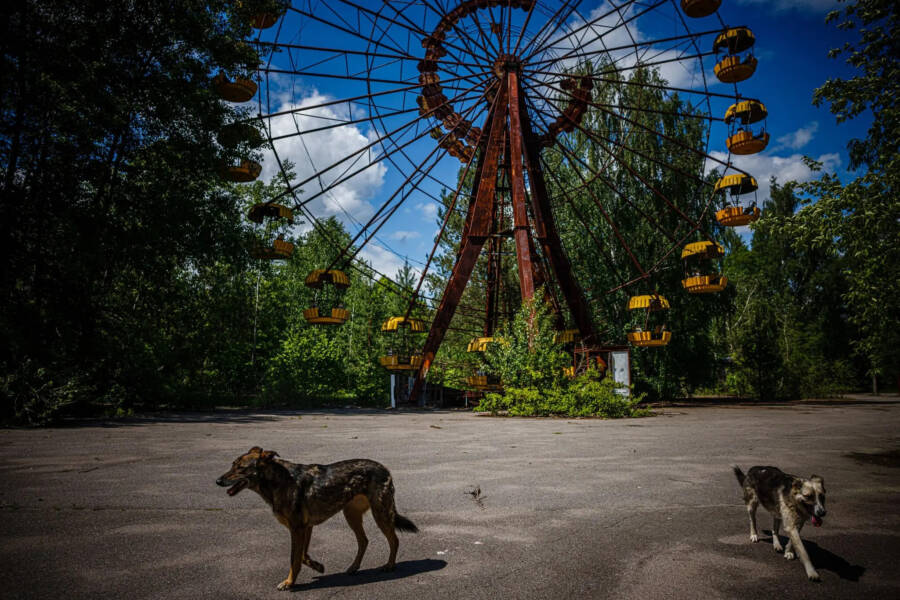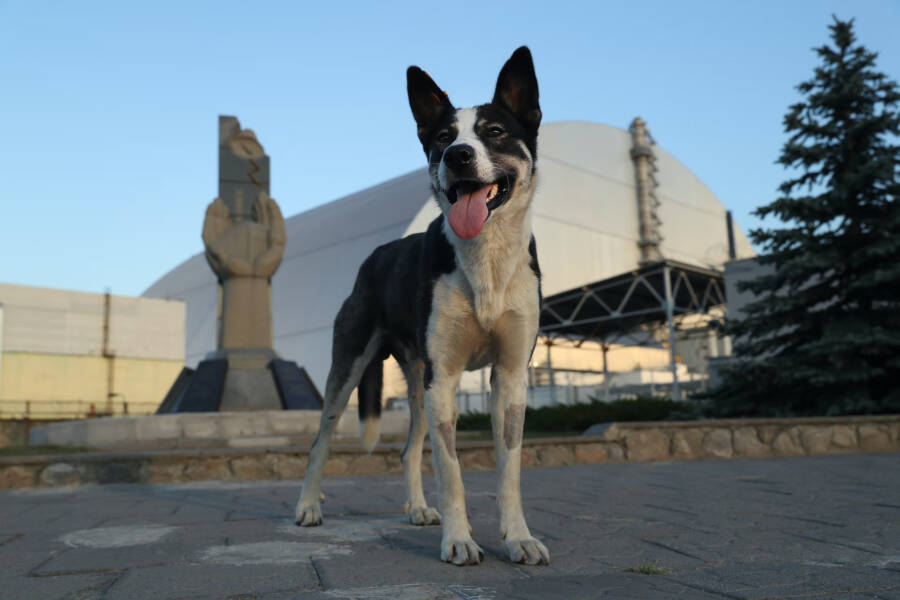Researchers used blood samples to pinpoint genetic differences between dogs in the Chernobyl exclusion zone and in surrounding areas. These findings may help scientists understand the effects of radiation on large mammals, including humans.

Dimitar Dilkoff/Agence France-PresseHundreds of free-roaming dogs wander around the Chernobyl exclusion zone, including near the highly radioactive power plant.
Almost 40 years after the Chernobyl nuclear disaster in Ukraine, hundreds of stray dogs roam the Chernobyl exclusion zone. Many of these pups are the descendants of pets left by families fleeing the disaster, and the lack of human influence in the area has allowed them to flourish.
Now, researchers are studying the potential effects of long-term radiation on these dogs — and just discovered that those living within the 18-mile nuclear exclusion zone are genetically distinct from other dogs.

While scientists have previously examined smaller creatures like birds, insects, and amphibians in Chernobyl’s exclusion zone, this is the first study to examine the potential effects of radiation on large-bodied animals in the area. What’s more, researchers believe their findings may help scientists understand what long-term radiation might mean for humans.
The study, published in the journal Science Advances, examined 302 dogs living varying distances from the Chernobyl power plant, comparing the genes of the dogs residing within the plant to those between 9 and 28 miles away.
From 2017 to 2019, researchers collected blood samples from these populations, as well as from free-breeding dogs in other parts of Ukraine and other countries, and tested them for genetic irregularities. According to the study, the researchers found significantly lower levels of genetic diversity among dogs in Pripyat, a nearby city that was abandoned after the disaster.
This population was distinct even from those living in cities mere miles away.
Among dogs in Chernobyl City, an area nine miles away from the power plant, and Slavutych, a city for evacuated power plant workers 28 miles from the power plant, the genetic diversity varied considerably. This research suggests that dogs from farther cities rarely bred with dogs closer to the power plant.
“I was completely surprised by the near total differentiation between the two populations, the fact that they’ve existed really in relative isolation for quite some time,” Timothy Mousseau, a biologist at the University of South Carolina and an author of the study, told the New York Times. “This is a unique opportunity… a unique population of animals.”
Although the study notes that physical barriers between cities in the area could have contributed to the variations in genetic diversity, researchers hypothesize that the long-term exposure to radiation could explain why the dogs in the Chernobyl exclusion zone are genetically distinct.

Sean Gallup/Getty ImagesA free-roaming dog stands outside of nuclear reactor four, now covered in cement and steel, in Chernobyl.
Scientists hope that future studies will show more definitive effects of radiation on dog populations in and around Chernobyl, such as how their generic differences may impact their health, behavior, and appearance over time. Further research may also help scientists learn about genetic mutations that help animals survive radiation.
Hopefully, future testing of Chernobyl dogs will also reveal the potential effects of radiation on people. According to geneticist Elaine Ostrander, the dogs’ DNA samples are “incredibly valuable” because dogs and humans share similar spaces and diets.
“We’ve never had an opportunity to do this work in an animal that reflects us as well as dogs,” Ostrander told Nature.
The dogs’ survival despite long-term nuclear exposure is remarkable for another reason. Immediately after the Chernobyl disaster, Ukrainian government officials launched a pet culling program, citing concerns that the dogs would unnecessarily suffer and spread the contamination to other areas.
Thankfully, this program was not successful in completely killing the dog population, and now scientists and guards are finding a silver lining in the dogs’ presence in the area.
While researchers are preparing to conduct future tests, organizations like the Clean Futures Fund+ are working to neuter, spay, feed, and vaccinate the dogs in Chernobyl, ensuring that they’re well cared for.
For Chernobyl guards, the dogs are often a comfort.
“They give us joy,” a guard going by the fake name “Bogdan” told the BBC. “For me personally, this is a kind of symbol of the continuation of life in this radioactive, post-apocalyptic world.”
After reading about the DNA differences in Chernobyl dogs, read about the Chernobyl disaster that caused this phenomenon in the first place. Then, discover other animals that are thriving in the Chernobyl exclusion zone.





